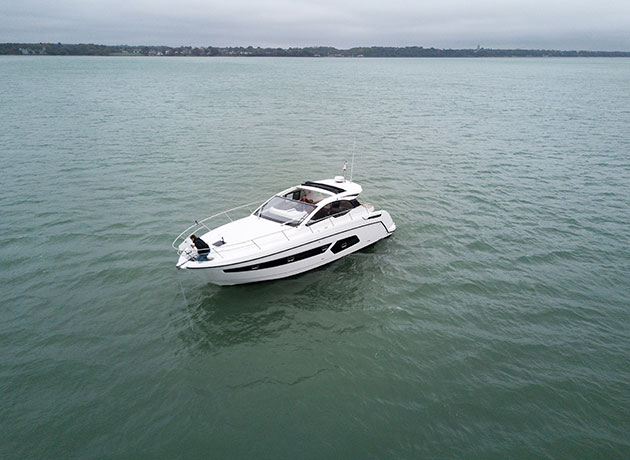In this instalment we demonstrate the best techniques to use when entering and exiting a lock basin
Locks are used to move boats up or down to different water levels and due to swirling currents and winds, can prove tricky to negotiate, particularly for the less experienced boater.
Locks generally come in two varieties; those where you tie up to the lock wall and have to adjust your lines as your boat rises or falls, and those which have a floating pontoon inside that rises and falls with you.
Many locks are self-service, so consult the local guidebook for details of how they operate. On approach, be ready with suitable lines and fenders – the latter may well need to go at gunwale height. If the lock is manual, you may need to come alongside the waiting pontoon and set the lock to allow your boat to enter.
Wind generally swirls around a lock entrance and if it’s blowing across the entrance, you may well find the wind inside is actually blowing in the opposite direction. Be prepared for this as your nice blown-on berth can suddenly become a blown-off one.
The entrance can also be affected by swirling currents so whenever possible, let the water movement subside, then helm the boat positively into the lock. Always aim for the far end as this will keep the boat straight.

VIDEO: How to – Head to windward
In our latest boat handling video, Jon Mendez shows how best to trim the boat when you head to windward

VIDEO: How to – Pick up a mooring buoy
In this episode we guide you through the best techniques for picking up a mooring buoy

VIDEO: How to – Helm downwind
In this episode, we guide you through how best to trim your boat if you are having to helm downwind
As soon as half the boat is inside the lock, knock the throttles back to neutral for a moment to ease your momentum and check the space you have chosen is still suitable before advising your crew accordingly.
Once alongside, either pick up the lock’s lines or place your own around the nearest bollard or ring and bring them back on board. Take a single turn around your boat’s cleat then hold the tail by hand so that the line can’t get caught and jam. The idea is to gently adjust the lines as the boat rises or lowers.
Going down in the lock is potentially more hazardous as any line made fast will quickly become load-bearing and impossible to release, so always carry a sharp knife just in case.
Going up is simpler as you just keep bringing in the lines as the water rises. Only use one line per cleat and one line per task. When it’s time to leave, wait until all the water movement has subsided, then pull in your lines and gently ease away from the walls.
If you don’t have a bow thruster, use a short stern spring to move the bow out before letting it slip, then move into the centre of the lock and focus on something ahead in the distance to keep the boat straight as you motor out between the lock gates.





















